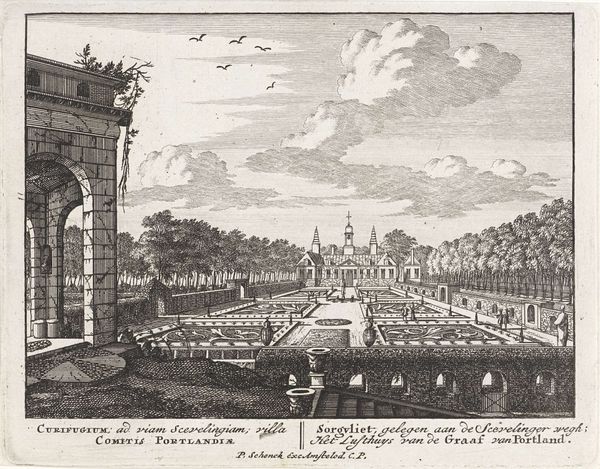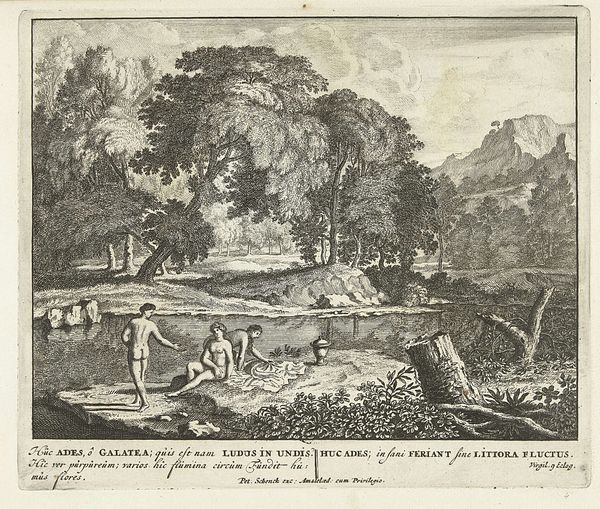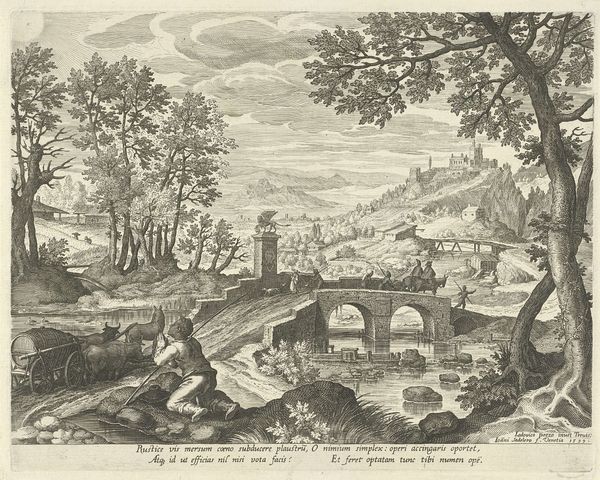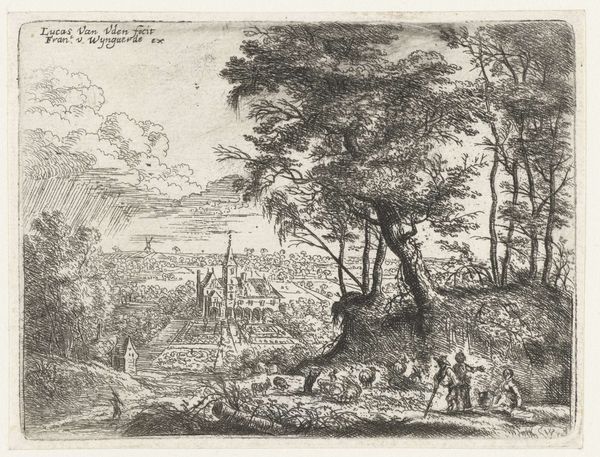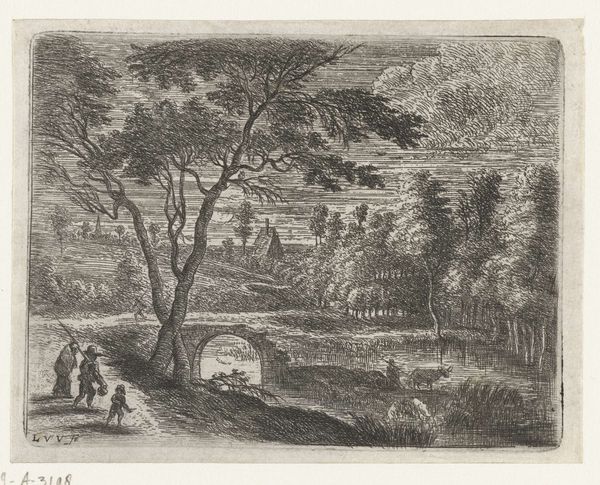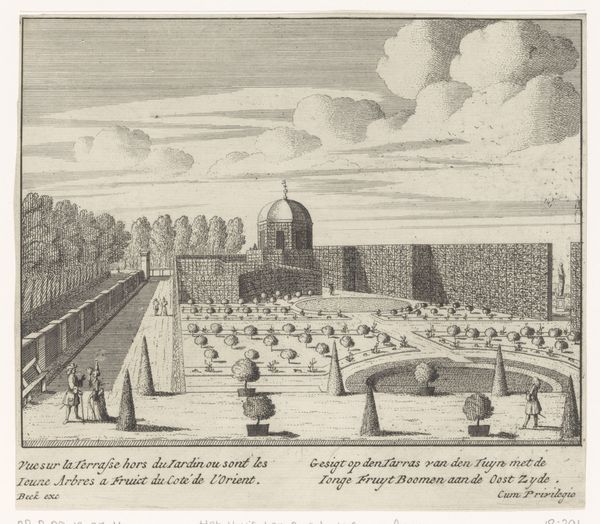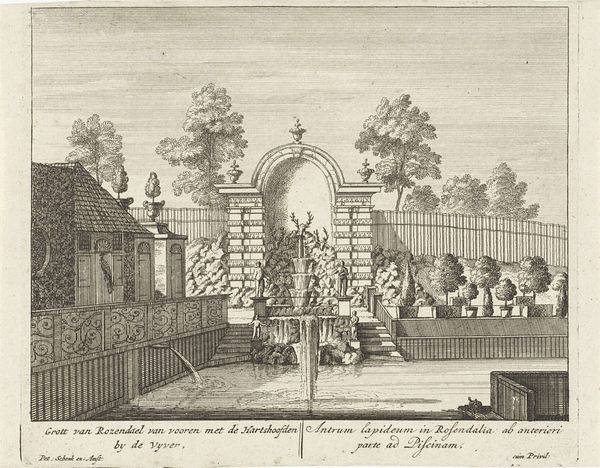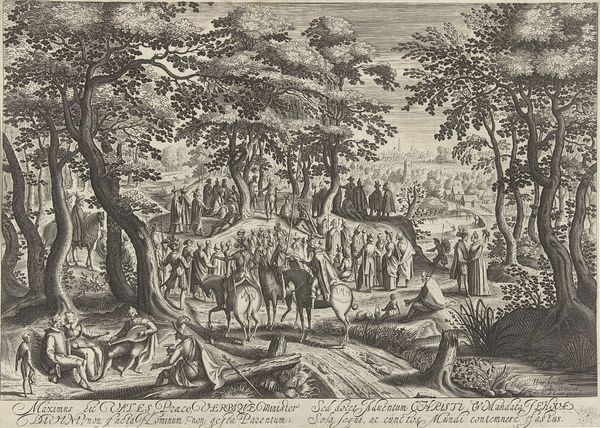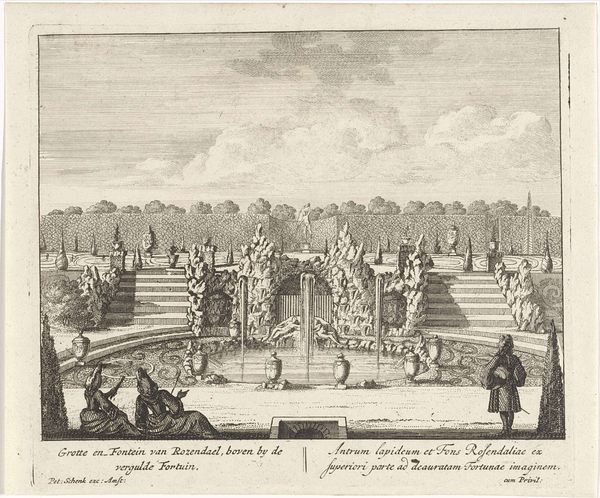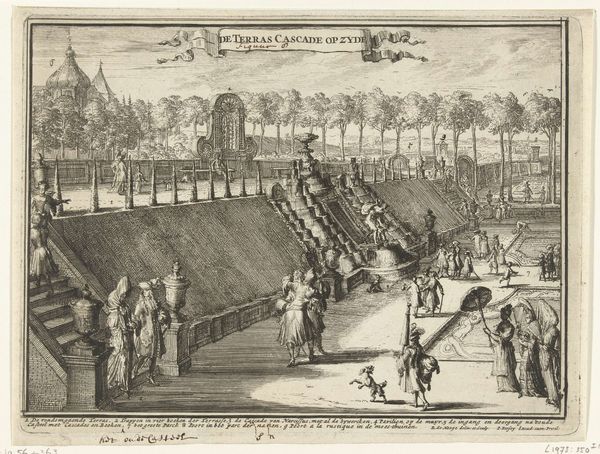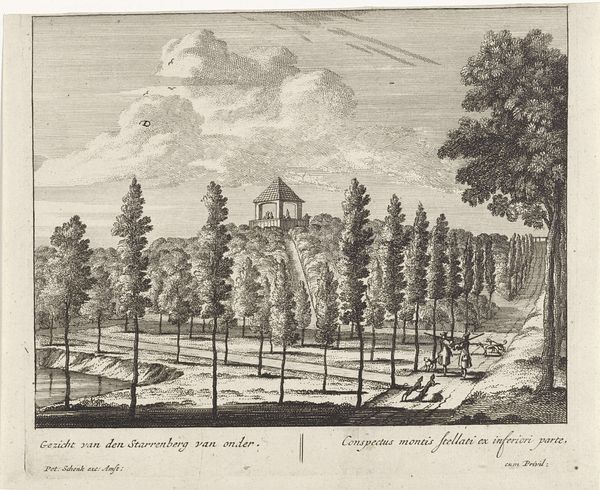
print, etching, engraving, architecture
#
baroque
#
mechanical pen drawing
# print
#
pen illustration
#
pen sketch
#
etching
#
old engraving style
#
landscape
#
personal sketchbook
#
sketchwork
#
pen-ink sketch
#
pen work
#
sketchbook drawing
#
storyboard and sketchbook work
#
engraving
#
architecture
Dimensions: height 167 mm, width 204 mm
Copyright: Rijks Museum: Open Domain
Curator: This delicate etching from around 1675-1711, titled "Grot en de fontein bij Kasteel Rosendael," offers a glimpse into the landscaped gardens of the time. It resides in the Rijksmuseum's collection. Editor: It has a rather serene quality to it. The meticulously rendered lines capture the geometric precision and contrived, man-made, appearance of nature in the landscape design, despite being created with pen, ink, and etching. Curator: Yes, the artist, Anonymous, focuses on the interplay between artifice and nature, really reflecting Baroque ideals of imposing order. It's fascinating to consider the labor involved in shaping the terrain itself, building the grotto, the fountains... These aren't naturally occurring forms, but constructed environments for leisure. Editor: And their presence broadcasts status. These meticulously planned gardens signified power and control—the owners literally sculpted the landscape to their liking. The print acts as a piece of social documentation. Who owned the land, who benefitted from this demonstration of wealth, and whose labour constructed these complex follies? It provokes those questions. Curator: Exactly! Look at the details – the carved stone, the elaborate fountain, it’s a display of resources. I see how printmaking itself played a key role in the dissemination of these aristocratic landscapes. It rendered elitist designs accessible, shaping expectations and taste, although it has to be acknowledged that engravings were by no means available to everyone. Editor: Good point. I'm now struck by how this image served a dual purpose; showcasing a very tangible display of power, but simultaneously influencing aesthetics beyond the castle walls. This artwork reflects a tension, as prints are products of material labour in the context of wealth and class, something which remains ever-relevant. Curator: Indeed. And by analyzing the print's materiality we unveil narratives of production, consumption, and class that existed even centuries ago. Editor: Looking at it with new eyes, this unassuming engraving reveals how powerful visual art is intertwined with society. Thank you.
Comments
No comments
Be the first to comment and join the conversation on the ultimate creative platform.
